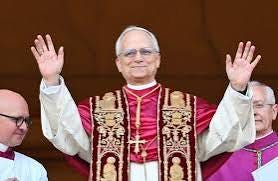Father, many commentators have noted that the new Pope Leo XIV has resumed wearing a liturgical vestment called the “mozzetta.” Could you explain the meaning of this vestment and the symbols associated with it? (Signed letter)
To answer this question properly, we need a broader perspective on the garments worn by clergy on different occasions. We can distinguish three types of attire: ecclesiastical dress, choir dress, and liturgical dress (or vestments).
Ecclesiastical dress is the ordinary attire of sacred ministers of every rank (prelates and lower clergy). This is the well-known black cassock, which identifies the sacred minister in daily life. The use of the clergyman (clerical suit with Roman collar) is permitted in particular circumstances, but it should not permanently replace the cassock.
Choir dress is ceremonial attire worn to assist at rites and for specific occasions established by ecclesiastical protocol. It consists of the white surplice (cotta, or rochet for prelates) over the cassock, and for those entitled to it, the mozzetta (a short cape fastened with buttons) worn over the rochet. In some circumstances, especially when presiding over a rite, a stole is also worn. The color of the garments varies: black for lower clergy, purple for bishops and certain prelates (e.g., Canons), and red for cardinals.
Liturgical dress refers to what is prescribed for liturgical celebrations. The various types and uses of sacred vestments are outlined in the rubrics of the liturgical books.
Other elements complete ecclesiastical attire: the fascia (sash), zucchetto (skullcap), biretta, pectoral cross (with chain or cord), and ring. Without further delay, we may state that the mozzetta, according to current norms, generally signifies episcopal dignity, though there are some exceptions.
This brief overview can be expanded by consulting the current Ceremonial of Bishops, which discusses the topic in numbers 1199 to 1210.
As can be inferred, the Supreme Pontiff appeared on the Vatican loggia wearing his proper choir dress, which he dons on occasions established by the specific protocol that governs papal appearances.
Now, the greater issue lies in the widespread aversion to ecclesiastical dress itself, which has led to a deep secularization among the clergy: ordinary clerical dress is often abandoned in favor of lay attire; choir dress has nearly vanished altogether (especially among the lower clergy); liturgical vestments are often simplified and stripped of their traditional elements.
Pauperism and spiritualism have impoverished the visible form of ecclesiastical dress, depriving both the Church and civil society of the public witness to transcendent and eternal realities. The warning of the Council of Trent has been forgotten:
“Though the vestment does not make the monk, it is nevertheless fitting that clerics always wear a dress suited to their state, so that the outward appearance may reflect the inner honesty of their lives. Today, however, the arrogance or irreligion of certain people has gone so far that, with no regard for their dignity or for the honor of the clerical state, they publicly wear lay clothing, straddling both the sacred and the profane.”
That this Tridentine provision remains valid is confirmed by the current Code of Canon Law, can. 284:
“Clerics are to wear suitable ecclesiastical garb, in accordance with the norms issued by the episcopal conference and legitimate local customs.”





Thank you for the thorough explanation!